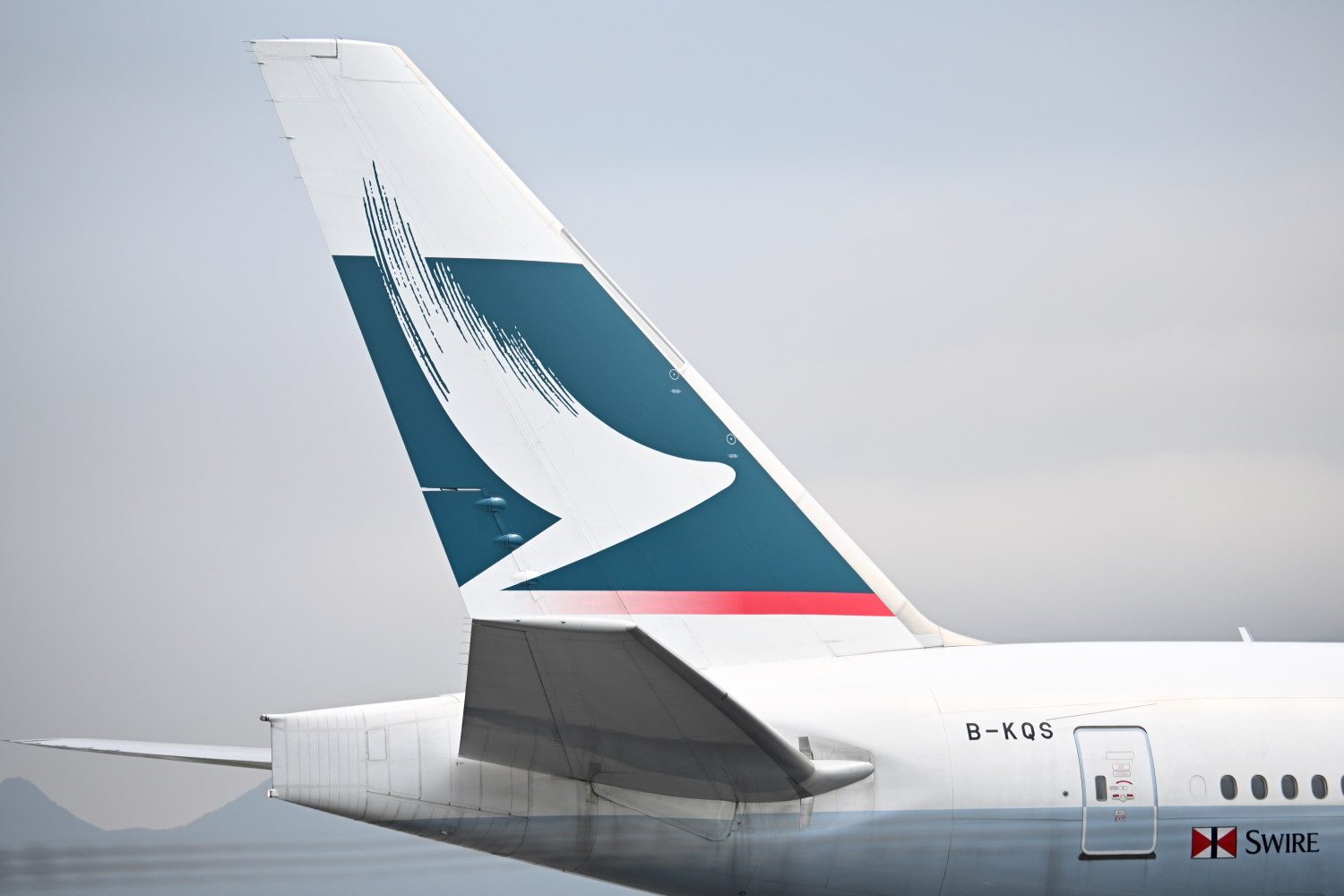
In this file photo taken on March 13, 2019, the Cathay Pacific logo is seen on the tail of a passenger plane as it prepares to take off from Hong Kong’s international airport. – Hong Kong flag carrier Cathay Pacific announced on March 27, 2019 it will buy budget airline HK Express for 628.15 million USD. AFP FILE PHOTO
HONG KONG — Cathay Pacific’s purchase of rival HK Express was an inevitable plunge into the no-frills market as the premier marque belatedly faces the reality that it can no longer ignore the budget sector, analysts say.
Asia’s biggest international carrier has historically eschewed the low-cost sector, even as the region’s rising middle class has fueled an unprecedented boom in air travel and demand for cheaper routes.
READ: 4 reasons airfares change constantly
But last week it finally bit the bullet, announcing it was buying HK Express for $600 million from the debt-laden Chinese conglomerate HNA Group.
The move allows Cathay to take over the city’s only budget carrier and gifts it much needed slots at one of the world’s busiest transport hubs — prompting many to ask why it had taken the airline so long to make such a move.
Analysts say Cathay’s reluctance to embrace the budget model was a result of its conservative way of thinking, in much the same way Nintendo was dragged kicking and screaming into the mobile gaming market after years of weak earnings.
But it is not too late for the airline, they say.
“It’s more like catching up rather than changing the landscape,” Jackson Wong, analyst at Huarong International Securities, told AFP, adding that Cathay realized it had to “face reality” that the budget market was something they needed to embrace.
Asia-Pacific is now the world’s largest market for low-cost carriers, accounting for nearly 600 million seats in 2018, according to CAPA Center for Aviation.
Too good an opportunity
And thanks to the region’s booming middle classes, seat capacity has quadrupled over the past decade.
During that time Cathay resisted moving into the low end of the market, even as their rivals did the opposite — Singapore Airlines formed Tigerair in 2003 and Qantas followed up with Jetstar Asia.
Now Asia’s skies are littered with budget carriers: Air Asia, Scoot, Nok Air, IndiGo, Lion Air, VietJet, the list keeps growing.
For a while Cathay’s intransigence worked, it remained an avowedly premier — and profitable — brand.
But as the regional budget scene grew, airlines in China and the Middle East began competing on longer haul flights and the more luxury frills Cathay offered.
By March 2017 Cathay reported its first annual net loss in eight years and announced a three-year overhaul to cut costs and improve efficiency.
Under new chief executive officer Rupert Hogg the move appears to have paid off — last month the airline announced it had swung back into the black after two years of losses.
Brendan Sobie, chief analyst at CAPA, said HK Express was too good an opportunity to pass up once it became clear the troubled HNA Group was looking to sell.
“It’s in their home market, they have to look at it, and quite frankly they’d be silly not to do it,” he told AFP.
According to Sobie, structural constraints and limited airport slots made it difficult for Cathay to establish a separate low-cost carrier, which was why it had previously said it would not think about a no-frills carrier until Hong Kong airport’s third runway came into operation in 2024.
Losses ‘woke them up’
He said the lack of space at home was also a limitation for competitors, making the move int the sector less urgent for Cathay, which had opposed budget airline Jetstar’s application to operate in Hong Kong in 2015.
But the purchase was not a financial “slam dunk” for Cathay, Sobie warned, given the small margins of budget airlines in the region and the fact that HK Express reported a net loss of $18 million in 2018, according to Cathay.
Shukor Yusof, the founder of aviation consultancy Endau Analytics, said Cathay’s brief foray into the red changed thinking at the company.
“The losses Cathay suffered in consecutive years woke them up and they realized if they didn’t alter their thinking, they’d be marginalized and become irrelevant,” he said.
“Then they saw how Singapore Airlines changed its strategy and that strategy worked,” he said, adding that Cathay should have moved into the budget sector 10 years ago.
He said turning HK Express around was a “big ask”.
“But if they apply stringent cost cuts and exploit the buoyant Chinese market, profitability is a possibility in two to three years,” he said.
He predicted HK Express may start to price aggressively and target a select group of travelers, with mostly leisure flyers among them.
“I foresee HK Express behaving and exhibiting characteristics similar to Ryanair in Europe,” he said, referring to the notoriously no-frills Irish low-cost carrier.